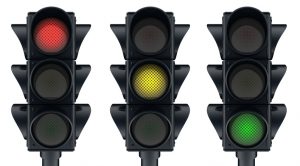 Liver fibrosis and cirrhosis diagnosed early on with ‘traffic light’ test could help prevent liver disease. Liver disease is often symptomless, and many patients don’t even realize they have the condition until it has progressed to more advanced stages. A diagnostic method to spot liver disease early on is significant for reducing the risk of severity and complications associated with liver disease.
Liver fibrosis and cirrhosis diagnosed early on with ‘traffic light’ test could help prevent liver disease. Liver disease is often symptomless, and many patients don’t even realize they have the condition until it has progressed to more advanced stages. A diagnostic method to spot liver disease early on is significant for reducing the risk of severity and complications associated with liver disease.
The Southampton Traffic Light (STL) test combines several different tests and clinical markers which are given a score that indicates a patient’s likelihood of developing liver fibrosis and cirrhosis.
Advertisement
The result are presented in three colors: Red means liver scarring and possible cirrhosis, green means no cirrhosis and low risk of death from liver disease in the next five years, and amber (yellow) implies at least a 50/50 risk of scarring and a strong possibility of death within five years.
The test was administered to over 1,000 patients, whose progress was carefully monitored to assess the accuracy of the test.
The test was found to be reliable in severe liver disease cases. It proved to be a helpful tool providing doctors with a general insight into a person’s condition.
Lead author Dr. Nick Sheron explained, “We are reliant on general practitioners detecting liver disease in the community so they can intervene to prevent serious liver problems developing, but so far we haven’t been able to give them the tools they need to do this. We hope that this type of test for liver scarring may start to change this because the earlier we can detect liver disease, the more liver deaths we should be able to prevent.”
Coauthor Dr. Michael Moore added, “In primary care, minor abnormalities of existing liver tests are quite common, but we struggle to know how best to investigate these further and who warrants specialist intervention. The traffic light test has the advantage of highlighting those at highest risk who should be investigated further and those in whom the risk is much lower where a watchful approach is more appropriate. This is not a universal screening test but, if targeted at those in whom there is a suspicion of liver disease, should result in a more rational approach to further investigation.”
Other methods to diagnose liver cirrhosis and fibrosis
Liver cirrhosis is diagnosed through laboratory testing, which includes tests to measure liver function and kidney function, tests to check for hepatitis, and tests to determine clotting. Imaging tests, too, are useful to determine the health of the liver and include magnetic resonance elastography or transient elastography, MRI, CT scans, and biopsy in which a sample of the liver tissue is removed and tested.
Your doctor will also look for any symptoms associated with a sick liver such as:
- Fatigue
- Easy bleeding
- Easy bruising
- Itchy skin
- Jaundice – yellowing of skin or eyes
- Ascites – fluid accumulation in abdomen
- Loss of appetite
- Nausea
- Swollen legs
- Weight loss
- Confusion, drowsiness, or slurred speech
- Spider-like blood vessels visible on skin
Diagnosing fibrosis can be similar to diagnosis cirrhosis, but your doctor will also look closely at your blood work and a biopsy sample to spot traces of illness. Fibrosis is rated in stages to describe its severity. Stage 0 is no fibrosis, stage 1 is an enlargement, stage 2 indicates fibrosis is extending out, stage 3 indicates bridges of fibrosis across the liver, and stage 4 is cirrhosis.
The stage of liver fibrosis will determine what kind of treatment your doctor puts you on. Unfortunately, the liver cirrhosis characteristic of stage 4 is irreversible, so parts of the liver may need to be surgically removed.
The best thing to do is try your best to prevent liver disease. Some useful prevention tips include:
Limit or cut out alcohol: Alcohol isn’t just linked to cirrhosis, it can also play an overall role in poor liver function.
Choose a healthy diet: It can promote liver function . Steer clear of fatty, fried foods and stick with fruits, vegetables, and lean meats. Red meat takes longer to break down in the liver.
Maintain a healthy weight: Some forms of liver disease, including cirrhosis, are linked to fat accumulation.
Reduce your risk of developing hepatitis: Do not share needles, ensure you are vaccinated, and be aware of the risk of hepatitis when traveling to foreign countries.
Advertisement
Avoid infections: Cirrhosis makes it difficult to fight off infections. Avoid people who are sick and wash your hands frequently.
Eat a low-sodium diet: High sodium can cause your body to retain fluids, worsening swelling in your abdomen and legs. Use herbs for seasoning your food, rather than salt. Choose prepared foods that are low in sodium.
Taking the necessary steps to prevent liver disease is essential for living a healthy life.
